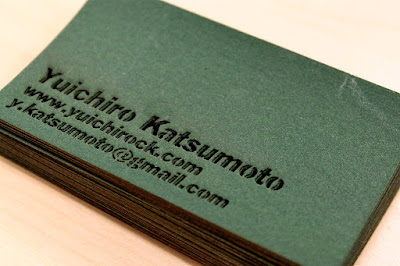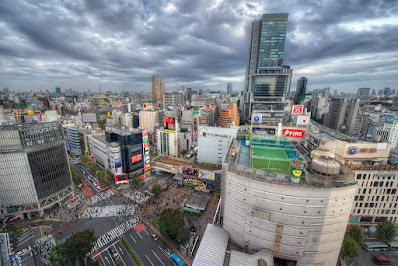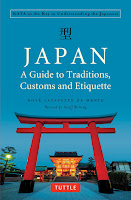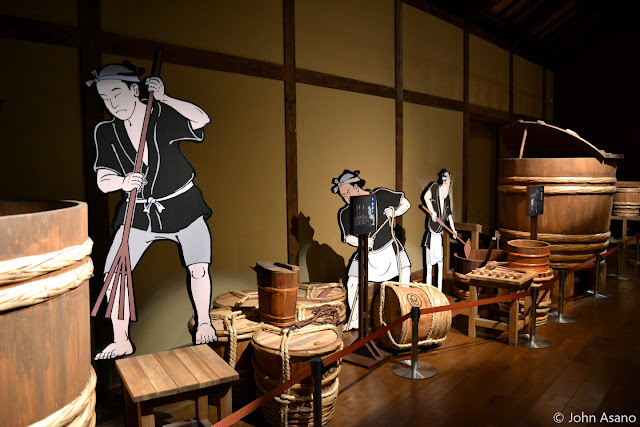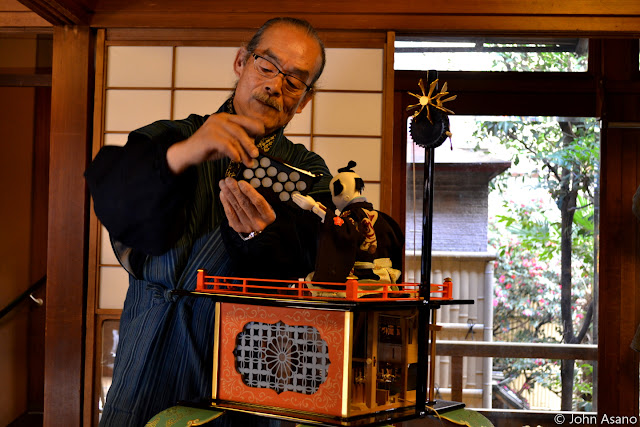Aichi Prefecture is best known for Nagoya Castle and the Toyota Motor Corporation, but if you delve further under its surface you will discover many amazing and unique things about this wonderful part of central Japan. From Japanese food culture and umami as the home of sushi and matcha to innovation and technology from Japan’s first wooden robots to modern-day marvels, Aichi has it all with a vast array of attractions.
Join me as I explore the best off the beaten-path experiences that the heart of Japan has to offer.
Mizkan Museum (Handa)
A fun and interactive museum where you can learn about the history of the famous Mizkan company as a vinegar producer in Japan. Traditionally Japanese vinegar was made from rice, but Mizkan being the innovative company that it is, decided to make vinegar from sake lees, a by-product of sake that is usually just thrown away. This new type of vinegar was cheaper to produce and tasted amazing giving sushi rice the kick it needed to elevate sushi to star status. In the early 1880s, as nigiri sushi was starting to take off in Edo (modern-day Tokyo), Mizkan saw a business opportunity and capitalized by quickly mobilising and shipping their amazing vinegar to Edo to catch the boom. The rest is as they say history. Today Mizkan produces vinegars, mustards, salad dressings, authentic Asian sauces, natto, pasta sauces and other food products, which are sold around the world.
http://www.mizkan.co.jp/mim/
Japanese Restaurant Ittou (Hekinan)
An amazing Japanese restaurant to experience the best food that the Chita Peninsula has to offer. Ittou specialises in traditional Japanese food made with the best local ingredients of the area. We enjoyed a wonderful lunch here prepared by chef, Nagata-san, who learned how to cook at the famous Tsukiji Tamura in Tokyo.
http://www.katch.ne.jp/~kobanten/kobanten08.html
Hichifuku Brewing Corporation (Hekinan)
The home of shiro shoyu (white soy sauce) in Japan with the Hichifuku Brewing Corporation being the only manufacturer of this amazing product. The amber-coloured sauce is organically made and keeps intact the colours of other ingredients it is cooked with unlike regular soy sauce. Hichifuku Brewing also manufactures shiro dashi (white broth) which is made with its famous white soy sauce along with a broth of carefully selected dried bonito, konbu (kelp) and shiitake mushrooms, giving umami to any dish. A tour of the factory will allow you to see and learn how these delicious products are made.
http://www.7fukuj.co.jp/arigato_sato/
Aiya Matcha Museum (Nishio)
Although not as well known as Uji in Kyoto, Nishio City is the home of matcha (powdered green tea) with a history of over 800 years. The Aiya Matcha Museum gives you an interesting hands-on experience where you can learn how to differentiate between the different quality of matcha by colour, aroma, texture and taste, as well as make your own unique matcha blend, which you can grind with a mill stone, whisk up to perfection and enjoy in the traditional tea ceremony room.
https://www.matcha.co.jp/
Japanese Restaurant Genjiko (Minami Chita)
Enjoy fresh seafood from the Chita Peninsula at this traditional Japanese-style Inn located in Minami Chita Hot Spring Village. The tasty dishes prepared by Genjiko feature a lot of fresh fish from Ise Bay including the famous Ise-ebi spiny lobster.
http://www.genji-koh.co.jp/
Kameya Yoshihiro Confectionary (Nagoya)
Wagashi are traditional Japanese sweets made of mochi and anko (red azuki bean paste) that were originally made to be enjoyed and counter the bitterness of matcha green tea. Nagoya established itself as a center for wagashi during the age of the samurai with the city home to many famous samurai warlords. One of the most famous wagashi makers in Japan is Kameya Yoshiro which was founded in 1949 and now has 17 shops around Nagoya. We experienced making Jonamagashi, fresh Japanese sweets designed to capture the colour and seasonal beauty of Japan. The wonderful experience included watching a certified wagashi master with 40 years of experience make a cherry blossom flower (spring), iris flower (summer), autumn leaf (fall), and chrysanthemum (winter), before trying our own hand at making a cherry blossom flower.
http://www.kameya-yoshihiro.co.jp/
Midtown BBQ (Nagoya)
An American style BBQ restaurant in the heart of Nagoya in the Fushimi area. The steak & smokehouse make their own original BBQ rubs and sauces with everything cooked over fire. I enjoyed a fantastic lunch here specially prepared by the chef for our visit. The lunch included a A5 Black Wagyu Shiitake Mushroom Cheeseburger and BBQ Smoked Spareribs featuring an original BBQ sauce made with Hatcho Miso, a local variety of red miso. I really like how this restaurant combines American classics with Japanese umami through great local ingredients.
http://midtown-bbq.com/
Karakuri Dolls at Tsutamo (Nagoya)
Japan is renowned for its futuristic robots but did you know that these innovative marvels have their roots dating back to the age of the samurai? Karakuri Ningyo were Japan’s original robots made during the Edo Period (1603-1868) to entertain guests. These traditional mechanized puppets use only the power of springs or weights, and can do it all from accurately shooting arrows at a target to writing calligraphy and serving tea or sake to their guests. These days you can find them at the top of festival floats entertaining the crowds at local festivals. I was lucky to be able to learn all about the workings of these mechanical wonders at the traditional Japanese restaurant, Tsutamo in the Sakae area of Nagoya, where a 9th generation master craftsman of karakuri-ningyo gave us a lesson in all things karakuri.
Toyota Commemorative Museum of Industry and Technology (Nagoya)
Did you know that the Toyota Motor Corporation started out in the textile industry? At the Toyota Commemorative Museum of Industry and Technology in Nagoya you can learn all about the fascinating history of Toyota from making innovative textile weaving machines to their evolution as a motoring giant. The museum utilizes and preserves the old factory and industrial heritage at the birthplace of Toyota in Nishi-ku, Nagoya. The interactive museum allows visitors to explore the wonderful history and technological revolutions of Toyota with over 3,000 real machines and moving exhibits spanning the modernization of Japan.
http://www.tcmit.org/


